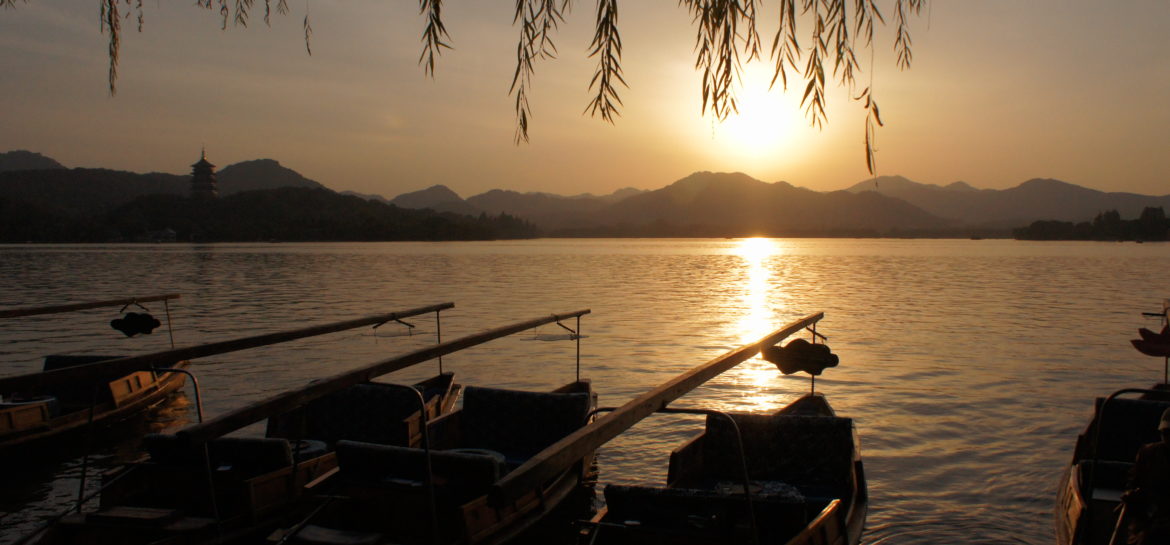
“It is without a doubt the finest and most splendid city in the world.” Marco Polo
An hour away from Shanghai by speed train sits Hangzhou – a city praised by poets, exalted by ancient journeyers, and revered by local citizens and expats alike. Seeking rejuvenation in open spaces and natural beauty, our family visited Hanghzhou (pronounced hahng joe) recently. Luckily for us, the praise the garden city has received for some 1,000 years has been justified. It is truly splendid.


Hangzhou was the capital of the Southern Song Dynasty which is also famously popular in China, in part for their successful defense against the Mongol invaders. The Southern Song Dynasty held the ferocious Mongol invasion of China at bay, falling only under the rule of Genghis Kahn’s grandson, Kublai Kahn. It was also during the Kublai Kahn’s reign (in the late 13th century) that Marco Polo traveled through China, and in particular Hangzhou.

The Chinese speak of Hangzhou with almost mythical adoration. Any traveler knows that cities have auras, personalities if you will. Hangzhou’s character is unquestionably graceful. Walking the streets, each of us immediately sensed a quieter, calmer city. The city sits at the end of the grand canal – a man-made canal originating in Beijing and built in part as early as the fourth century AD – that is used to ferry trade goods and food and grain from the fertile lands in the south to the more arid lands of the north. However, the jewel of Hangzhou and perhaps most written about feature is Westlake or Xi Hu.

Our first view of the lake presented a nothing less than picturesque view of one of the many stone bridges along the lake. Parks and gardens also line the large lake, making discovery of beautiful views a task that more than a weekend could accomplish.


Around every bend or twist in the pathways there are places to sit and watch the view, stop for tea, play a rousing game of Mahjongg with friends, or just be at peace.


On our second day in Hangzhou, we hired a private tour guide to explore some of the farther flung sites. Private tours are like visiting a good friend. Instead of a generic presentation of common sites, a private tour guide customizes your day to your needs and is there to share details – including secret tips and views on common sights – that you wouldn’t have known on your own. More than once I looked around to wonder why nobody else was looking at what we were and it was simply because they didn’t know and our guide did. While we do value the wandering method of travel, at other times a guide helps to make sure you don’t miss hidden treasures.


In the foothills on the northwest shores of Westlake sits the poetically named Temple of the Souls Retreat, otherwise known as Lingyin Temple. This temple and its grounds are purported to be one of the 10 Grandest Buddhist Temples in China. Out of no disrespect to Jing’An in Shanghai, the Lingyin temple IS grander. The temple buildings are so big, and the Buddhas and other statues so large. it was hard to take photos of them.


The complex sits on a large wooded site that contains a series of massive temples honoring Buddha and his guardians. The temple was damaged many times over the years and during the Cultural Revolution so much of it has been refurbished since then. One hall contains 500 unique statues of monks (referred to as arhats) who have achieved enlightenment.


Sitting next to the temple is the Feilai Peak, a limestone outcropping that has more than 300 carved statues dating back 1,000 or more years. Though the temple has been reconstructed over the years, these carvings are original and only add to the wonder of this place.



We wrapped up our day with a stroll through the Yunqi Bamboo Forest and the quietly rolling tea hills of the surrounding area.

The grace that this city holds within its lake, parks, temples, and hills filled with tea is magnetic. Like the flowering osmanthus tree which is the city’s official flower, Hangzhou fills your sights with an unassuming elegance and should be on any itinerary to China.
